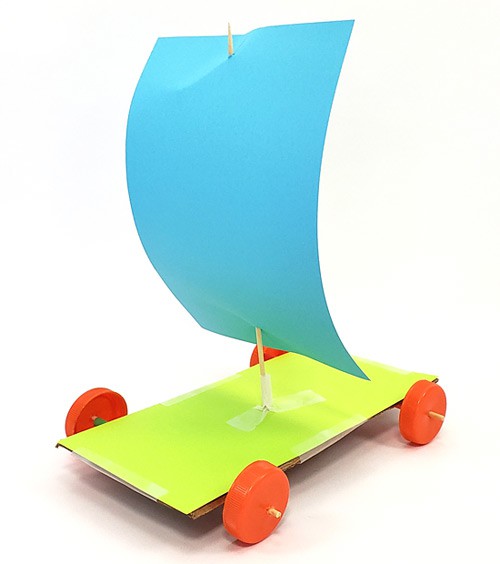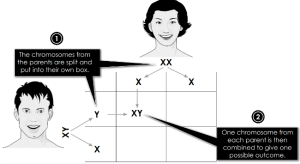This term for Social Studies I will be learning about 5 Historic Significant Event/Figures.
We are gonna learn about Fighting for Freedom Around the World and we are also gonna learn about Fighting for Freedom in New Zealand.
——————–
Must Know Words for the Semester
| Must Know word |
Definition
|
| Colonisation |
The action or process of settling among and establishing control over the indigenous people of an area. |
| Independance |
Independence is a condition of a nation, country, or state in which residents and population, or some portion thereof, exercise self-government, and usually sovereignty, over its territory. The opposite of independence is the status of a dependent territory. |
| Empire |
A former collective term for the territories under the leadership or control of the British crown |
| Passive Resistance |
A tactic of non-violent resistance to authority pioneered by Mahatma Gandhi in his campaign against the British government in India in the 1930s and 1940s. Passive resistance has since become an accepted way for minorities to place moral pressure on majorities. |
| Segregation |
Racial segregation is the separation of people into racial or other ethnic groups. |
| Integration |
Integration includes goals such as leveling barriers to association, creating equal opportunity regardless of race, and the development of a culture that draws on diverse traditions, rather than merely bringing a racial minority into the majority culture. |
| Racism |
The belief that different races possess distinct characteristics, abilities, or qualities, especially so as to distinguish them as inferior or superior to one another. |
| Discrimination |
The unjust or prejudicial treatment of different categories of people, especially on the grounds of race, age, sex, or disability. |
| Passive and Peaceful Protest |
Nonviolent resistance, or nonviolent action, sometimes called civil resistance, is the practice of achieving goals such as social change through symbolic protests, civil disobedience, economic or political noncooperation, satyagraha, constructive program, or other methods, while refraining from violence and the threat of violence |
| Equality |
They’re guarantees of equal social opportunities and protection under the law, regardless of race, religion, or other characteristics. Examples are the rights to vote, to a fair trial, to government services, and to a public education. |
| Apartheid |
The action or process of settling among and establishing control over the indigenous people of an area. |
| Slums |
Independence is a condition of a nation, country, or state in which residents and population, or some portion thereof, exercise self-government, and usually sovereignty, over its territory. The opposite of independence is the status of a dependent territory. |
| Confiscation of land |
About 1600 troops invaded the western Taranaki settlement of Parihaka, which had come to symbolise peaceful resistance to the confiscation of Māori land. Founded in the mid-1860s, Parihaka was soon attracting dispossessed and disillusioned Māori from around the country. |
| Invasion |
An act of invading. especially : incursion of an army for conquest or plunder. : the incoming or spread of something usually hurtful. |
| Occupation |
The use, settlement or possession of solid areas of the earth’s surface |
| Reconciliation |
The restoration of friendly relations. |
|
|
|
|
|
|
Freedom Fighter – Mahamat Gandhi
Name: Mohandas Karamchand Gandhi
Born: 2nd of October 1869
Place of Birth: Porbandar, India
Job: Lawyer
Belief/Faith: Non-Injury to living things, fasting for purification, vegetarianism and meditation
What did he want for India?
Independence
How did he go about getting it?
Protests
Why is he a Freedom Fighter?
He fought for civil rights in a non-violent way
Freedom Fighter – Rosa Parks
13/3/24
Name: Rosa Louise McCauley Parks
Born: 4th of February 1913
Place of Birth: United States, Alabama
Job: Civil Right Activist and a dressmaker
Belief/Faith: Rosa Parks believed that everyone deserved to be treated equally and fairly.
What did she want for America?
Racial Equality.
How did she go about getting it?
She refused to give up her bus seat to a white man in Montgomery, Alabama and started a Montgomery Bus boycott.
Why is she a freedom fighter?
She fought for equal rights.
20/03/24
The Birmingham Campaign
- Who was Martin Luther King?
He is a leader in a civil rights movement
He Was looking to revive the movement, gain national attention and show the rest of America the way blacks were being treated in the South
- Who was Eugene “Bull” Connor?
Commissioner of Public Safety in Birmingham
He used his power to enforce segregation, defend the “way of life” in Alabama
He closed down public parks rather than have them integrated.
- Why did the Civil Rights campaigners choose Birmingham?
In the 1960s, Birmingham was one of the most racially segregated divided cities in the USA
- What were the local aims of the Birmingham Campaign?
The local aims were the desegregation of Birmingham’s downtown stores, fair hiring practices in shops and city employment and the creation of a bi-racial committee to oversee the desegregation of Birmingham’s public schools.
- What were the national aims of the Birmingham Campaign?
The national aim was an American movement organized in early 1963 by the Southern Christian Leadership Conference to bring attention to the integration efforts of African Americans in Birmingham, Alabama
- What happened in Phase 1?
In April 3rd Martin Luther King states his demands for desegregation
On April 10th some small groups begin marching in front of the city hall and picketing stores. The police were directed to arrest the protesters
SCLC planning and fundraising meant that the protesters were bailed out as soon as they were locked up, and they would be back out protesting
The 12th of April, Martin Luther King was arrested with other leaders
The 20th of April, Martin Luther King released to find that the movement was losing steam, they needed to get more people marching
- What did the SCLC do to get the movement going again?
SCLC leaders suggest using students in the marches.
- What happened to the protesters during Phase 2?
On May 2nd, over 1000 young people were sent to march to the city centre and 959 of them were arrested. The day after, May 3rd, more than 2500 were sent out to march, both children and adults. Connor ordered firemen to turn their high pressure hoses on the protesters
- What happened in Birmingham as a result of the campaign? (list three)
- No more segregation
- Banned racial discrimination
- Paved the way for civil rights act of 1964
- What did this teach the campaigners?
Showed the black community that nonviolent methods worked, even in the face of violence
Paved the way for the Civil Rights Act of 1964
Freedom Fighter – Nelson Mandela
09/04/24
Name: Nelson Rolihlahla Mandela
Born: July 18th, 1918
Place of Birth: Mvezo, South Africa
Job: Writer and activist
Belief/Faith: Peace, forgiveness, compassion and human dignity.
What did he want for South Africa?
Equality and freedom
How did he go about getting it? – Actions
He negotiated with State President F. W. de Klerk the end of apartheid in South Africa and did protests
Why is he a Freedom Fighter?
He fought for equality
21/5/24
Name: Te Whiti o Rongomai
Born: 1830
Place of Birth: New Zealand, Taranaki
Job: A Māori spiritual leader
Belief/Faith: Temperance and peace
What did he want for Parihaka?
He wanted Parihaka to be a place of sanctuary and peace.
How did he go about getting it? – Actions
He helped passengers and crew escape from Lord Worsley
Why is he a Freedom Fighter?
He established Parihaka to be a place of sanctuary and peace.
Name: Tohu Kākahi
Born: 22nd of January, 1828
Place of Birth: New Zealand, Puketapu
Job: A prophet
Belief/Faith: Making Parihaka to be the symbol of pacifist
What did he want for Parihaka?
For making the village of Parihaka in Taranaki a symbol of pacifist protest against government land acquisitions.
How did he go about getting it? – Actions
Organized a passive resistance against the occupation of Taranaki
Why is he a Freedom Fighter?
Fought against the resistance.
4/6/24
Connection to Christchurch
What is the connection of Parihaka to Christchurch?
Te Whiti o Rongomai and Tohu Kakahi was imprisoned in Christchurch at Addington Gaol but they were allowed outside sometimes to go the Kaiapoi Woollen Mills, Addington Railway workshops, Canterbury Museum, the Cathedral and even the theatre. These were used to promote the benefits of Pākehā civilisation as illustrated by Christchurch’s industries and institutions.
Link to the article
Q: Is this resource a Primary or Secondary source?
A: Secondary source with primary sources
Parihaka Song
Song Lyrics
Analyse what do you think the song writer is trying to communicate about Parihaka? Use quotes from the song to support your answer.
The song writer is trying to give the people of Parihaka hope and determination
“Rise up, defend yourself, never give in
Look to the sky, the spirit of Te Whiti
The endless tide is murmuring his name.”
“I know Te Whiti will never be defeated
And even at the darkest hour
His presence will remain
I’ll sing to you the song of Parihaka.”
Q: Is this song a Primary or Secondary source?
A: Secondary




